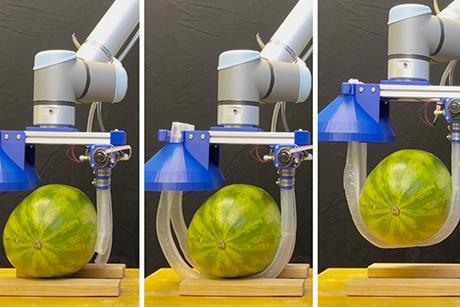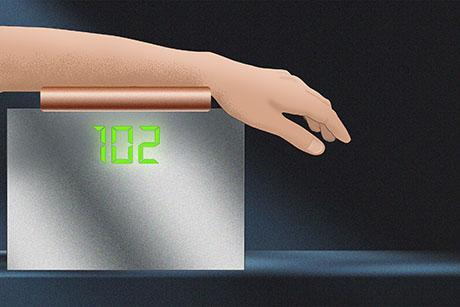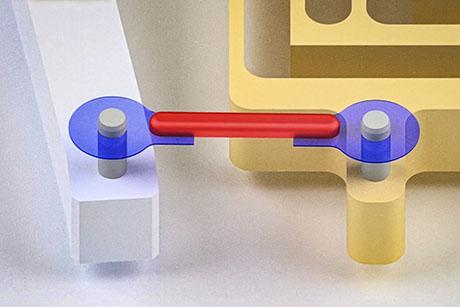Alumni Spotlight: Davide Marini, PhD ‘03
CEO and Cofounder, Firefly BioWorks
by Alissa Mallinson

Photo courtesy of Davide Marini
What was missing in the biomedical market that inspired you to cofound Firefly?
Many of the technologies currently available to life sciences researchers require dedicated instrumentation and consumables. As a consequence, scientists typically develop assays that are only usable on the platform on which they were designed. When I saw Daniel Pregibon (who at the time was finishing his PhD in the Department of Chemical Engineering, under the supervision of Professor Patrick Doyle) present the technology he had invented at a conference sponsored by the Deshpande Center, I was immediately captured by the elegance of the idea: a very flexible method for rapid micro-fabrication of hydrogel microparticles for biological analysis. We started Firefly BioWorks with a desire to offer scientists a completely open, flexible method for developing biological assays. The full potential of our technology became apparent after talking with several instrument manufacturers. It became clear that our products had the power to shift the complexity from the instrument to the consumable, allowing existing equipment to perform more sophisticated tasks than those for which it was designed.
Please describe your product suite.
Our core technology, Optical Liquid Stamping, allows rapid production of individually encoded hydrogel microparticles that can be easily bio-functionalized by embedding DNA, antibodies or other biologically relevant molecules within their matrix. We’ve designed our particles to be mixed with a biological sample to reveal the presence of specific biomarkers of interest. Our first product, FirePlex miRSelect™, is designed to detect microRNAs, an important class of biomarkers that regulate gene expression and has shown great potential for cancer diagnostics. The particles in miRSelect™ are designed to be read on standard flow cytometers, so users don’t need to purchase additional equipment to use our products. These hydrogel particles are more sensitive than existing microarrays and solid polystyrene beads, because they are made of a porous, flexible hydrogel that mimics aqueous conditions. Firefly particles allow for target molecules to diffuse into a 3D scaffold, increasing the number of target molecules that bind and therefore producing a more intense fluorescence signal. Furthermore, their porosity is precisely tuned to size-exclude certain species from the particle interior.
Where did the idea come from?
The idea came from a failed experiment. The inventor, Daniel Pregibon, was trying to develop a new method for coating a surface with a structured hyrodgel pattern. A change he made to the setting allowed individual patterns to float away after polymerization. After noticing this unexpected behavior and talking to his advisor Professor Doyle, they realized they had created an entirely novel combination of UV photolithography and microfluidics – a powerful new method for microfabrication.
How does your optical liquid stamping fill the void in the market?
Existing solutions for miRNA detection typically fall within two categories: either high-throughput/low-multiplexing, or high-multiplexing/low-throughput. But according to several opinion polls among scientists, there is a strong need for solutions allowing them to profile “100 targets over 100 samples in the same day.” Our technology was designed to address exactly this need. Additionally, each one of our products is customized for a specific user. All you need to do is type the names of the miRNAs you wish to profile on our web site, and we will ship you a product built specifically for your purpose. We have also just launched a web-based method for automated product customization, based on relevance of microRNA targets as published in the scientific literature. As a startup, we can make decisions very rapidly and integrate a wide spectrum of technologies into our production work flow.
What are you most proud of?
Our team. This is by far the most important ingredient in a startup company. It is so important that investors typically assume the technology won’t work, but that if the team is driven and resourceful enough, they will find their way out. We have established a culture of trust-based open conflict, where criticism is encouraged. We also do not tolerate arrogance, as it is a big obstacle to absorbing new information. We greatly value passion and admire people that love excellence for its own sake.
How did your PhD work in MechE inspire you to start Firefly?
My PhD adviser, Professor Roger Kamm, allowed me the freedom to explore uncharted territory. This was a very precious opportunity. I was working on the mechanical properties of a biomaterial, and eventually found myself deeply immersed in the molecular structure of the fibers clotting the brain of Alzheimer’s patients. The years I spent at MIT were the most exhilarating of my professional life. Having the opportunity to interact with many different departments was an extraordinary and invaluable experience. I particularly enjoyed the interaction with the biology department. It is through this interaction that I became captivated by the complexity of living systems, and by ion channels in particular – the biological equivalent of transistors. This window into the world of biology kindled my passion for developing products designed to make the life of scientists easier.
MIT’s Department of Mechanical Engineering has historically attracted very entrepreneurial, hands-on students. It was through my interaction with these friends that I came to appreciate the importance of applying theoretical principles to building useful products. In Italy, where I grew up, the emphasis is more on learning the theory and proving theorems. At MIT I learned the beauty of applying first principles to creating real products. In a sense, I re-discovered what my ancestors enjoyed during the Renaissance in Florence, where small workshops of talented artists produced remarkable works of art and developed their skills to absolute excellence.
How has your time at MIT influenced your professional decision-making?
MIT has shaped my thinking in such a deep way that I cannot even imagine who I would be without this experience. The Institute offers an environment that I have never found anywhere else. When I make important decisions, I always bring to mind the most extraordinary people I met here and how they would think in front of the same challenge. I also remind myself of the words of Teresa of Avila, a 16th-century Spanish nun: “Humility is the bread that must be eaten at every meal.”


